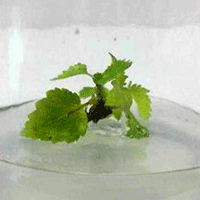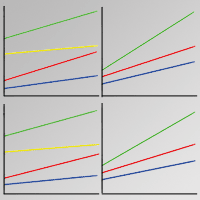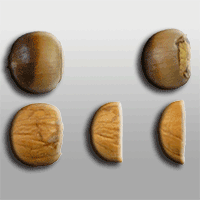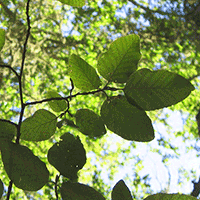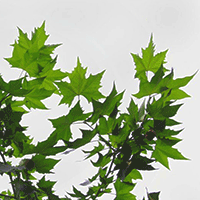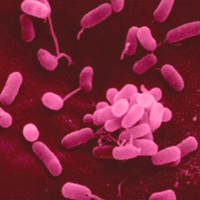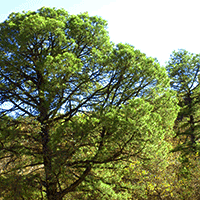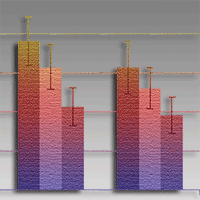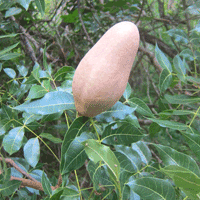
Seedling quality and short-term field performance of three Amazonian forest species as affected by site conditions
Zilza Thayane Matos Guimarães (1), Débora Coelho Da Silva (2), Marciel José Ferreira (3)
iForest - Biogeosciences and Forestry, Volume 17, Issue 2, Pages 80-89 (2024)
doi: https://doi.org/10.3832/ifor4317-016
Published: Mar 21, 2024 - Copyright © 2024 SISEF
Research Articles
Abstract
High quality seedlings are essential for the successful establishment of forest stands. Seedling quality can be assessed by the morphological attributes (e.g., height, diameter, dry mass, Dickson’s quality index) measured in the nursery phase. The defining, producing, and handling of seedlings can be based on specific characteristics suited to a site, as proposed by the Target Plant Concept. However, a target plant concept is an important research gap for Amazonian tree species. Here, we explore the associations between morphological attributes of seedlings in the nursery and determine the combined effect of the seedling quality attributes and site preparation methods on one-year field performance to define a range for nondestructive morphological attributes that can be associated with successful establishment for Amazonian commercial forest species - Bertholletia excelsa, Dipteryx odorata and Tachigali vulgaris. We measured morphological attributes in the nursery and analyzed the correlations to detect better predictors of destructive attributes. Then, we related these initial morphological attributes to survival and growth one year after planting in two site conditions: manual holing preparation and mechanical site preparation (subsoiling plus harrowing). We represent growth using different metrics: one-year size, absolute and relative growth rates in height and root collar diameter. Site conditions were assessed by soil physical properties. For all species, root collar diameter was a good predictor of destructive attributes that evaluated seedling quality, such as Dickson’s quality index. Site preparation methods resulted in different site qualities. Mechanical site preparation improved the total porosity and reduced the bulk density and resistance to penetration. Survival was not affected by initial attributes or site preparation methods. The initial attributes were poor predictors of field growth for D. odorata and T. vulgaris. The field performance of B. excelsa seedlings was affected by initial attributes, site, and the combination of both. The definition of a range for operational attributes according to site conditions is true only for B. excelsa. These results are important to help fill research gaps related to technical procedures to establish large-scale reforestation projects using Amazonian tree species.
Keywords
Plant Target Concept, Morphological Attributes, Mechanical Site Preparation, Subsoiling, Harrowing, Growth Rates
Authors’ Info
Authors’ address
Coordination of Environmental Dynamics, National Institute of Amazon Research, Manaus, Amazonas (Brazil)
Department of Forest Science, Soils and Environment, São Paulo State University, School of Agronomic Sciences, Botucatu, São Paulo (Brazil)
Department of Forest Sciences, Federal University of Amazonas, Manaus, Amazonas (Brazil)
Corresponding author
Paper Info
Citation
Guimarães ZTM, Da Silva DC, Ferreira MJ (2024). Seedling quality and short-term field performance of three Amazonian forest species as affected by site conditions. iForest 17: 80-89. - doi: 10.3832/ifor4317-016
Academic Editor
Giorgio Vacchiano
Paper history
Received: Jan 28, 2023
Accepted: Dec 20, 2023
First online: Mar 21, 2024
Publication Date: Apr 30, 2024
Publication Time: 3.07 months
Copyright Information
© SISEF - The Italian Society of Silviculture and Forest Ecology 2024
Open Access
This article is distributed under the terms of the Creative Commons Attribution-Non Commercial 4.0 International (https://creativecommons.org/licenses/by-nc/4.0/), which permits unrestricted use, distribution, and reproduction in any medium, provided you give appropriate credit to the original author(s) and the source, provide a link to the Creative Commons license, and indicate if changes were made.
Web Metrics
Breakdown by View Type
Article Usage
Total Article Views: 10180
(from publication date up to now)
Breakdown by View Type
HTML Page Views: 4236
Abstract Page Views: 2909
PDF Downloads: 2756
Citation/Reference Downloads: 11
XML Downloads: 268
Web Metrics
Days since publication: 633
Overall contacts: 10180
Avg. contacts per week: 112.58
Citation Metrics
Article Citations
Article citations are based on data periodically collected from the Clarivate Web of Science web site
(last update: Mar 2025)
Total number of cites (since 2024): 1
Average cites per year: 0.50
Publication Metrics
by Dimensions ©
Articles citing this article
List of the papers citing this article based on CrossRef Cited-by.
References
Alocação de biomassa e indicadores de crescimento para a avaliação da qualidade de mudas de espécies florestais nativas [Biomass allocation and growth indicators for the evaluation of the quality of seedlings of native forest species]. Ciência Florestal 31: 1733-1750. [in Portuguese]
CrossRef | Gscholar
O Crescimento de duas espécies florestais pioneiras, pau-de-balsa (Ochroma lagopus Sw.) e caroba (Jacaranda copaia D. Don), usadas para recuperação de áreas degradadas pela agricultura na Amazônia Central, Brasil [Growth of two forest pioneer species, pau-de-balsa (Ochroma lagopus Sw.) and caroba (Jacaranda copaia D. Don), used for rehabilitation of degraded areas from agriculture in Central Amazon, Brazil]. Acta Amazônica 33: 447-482. [in Portuguese]
CrossRef | Gscholar
Os latossolos amarelos, álicos, argilosos dentro dos ecossistemas das bacias experimentais do INPA e da região vizinha [The yellow, alic, clayey oxisols within the ecosystems of the INPA experimental basins and the neighboring region]. Acta Amazônica 12: 47-60. [in Portuguese]
CrossRef | Gscholar
Efeitos de sistemas de preparo do solo na erosão e na produtividade da acácia-negra (Acacia mearnsii De Wild.) [Effects of soil tillage systems on soil erosion and on black wattle (Acacia mearnsii De Wild.) productivity. Ciência Florestal 17: 205-215. [in Portuguese]
CrossRef | Gscholar
Manual de métodos de análise de solo [Manual of soil analysis methods]. Embrapa Solos, Rio de Janeiro, Brasil, pp. 230. [in Portuguese]
Gscholar
Survival and growth of native Tachigali vulgaris and exotic Eucalyptus urophylla × Eucalyptus grandis trees in degraded soils with biochar amendment in southern Amazonia. Forest Ecology and Management 368: 173-182.
CrossRef | Gscholar
Water content. In: “Methods of Soil Analysis, Part 1. Physical and Mineralogical Methods” (Klute A ed). Agronomy Monograph no. 9, Madison, WI, USA, pp. 493-594.
Gscholar
Produção de mudas de aroeira (Schinus terebinthifolius Raddi) para recuperação de áreas degradadas pela mineração de bauxita [Aroeira (Schinus terebinthifolius Raddi) seedling production for restoring bauxite mined areas]. Cerne 11: 187-196. [in Portuguese]
Online | Gscholar
Plantio de espécies nativas para restauração de áreas em unidades de conservação: um estudo de caso no sul do Brasil [Plantation of native species for restoration of areas in conservation units: a case study in Southern Brazil]. Floresta 45: 129-140. [in Portuguese]
CrossRef | Gscholar
Produtividade energética da madeira de Tachigali vulgaris por classe diamétrica em plantios experimentais na Amazônia [Energetic density of Tachigali vulgaris wood by diametric class in two experimental plants in the Amazon]. Nativa 6: 773-781. [in Portuguese]
CrossRef | Gscholar
Research gaps and priorities in silviculture of native species in Brazil. Working paper, WRI Brasil, São Paulo, Brasil, pp. 44.
Gscholar
Sementes e mudas: guia para propagação de árvores brasileiras [Seeds and seedlings: guide for the propagation of Brazilian trees]. Oficina de Textos, São Paulo, Brasil, pp. 463. [in Portuguese]
Gscholar

